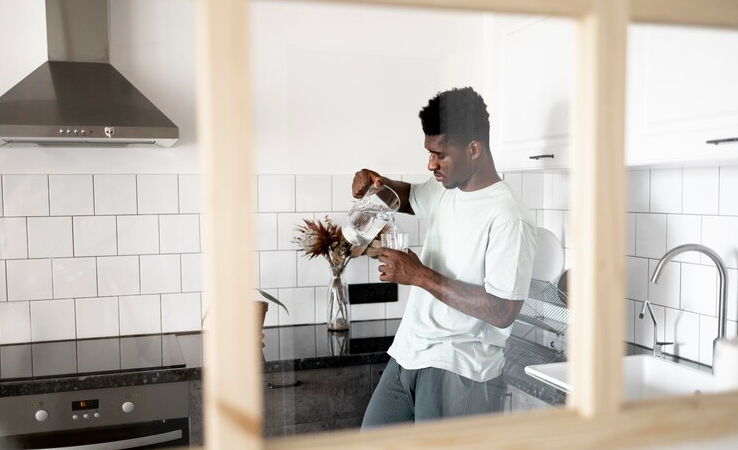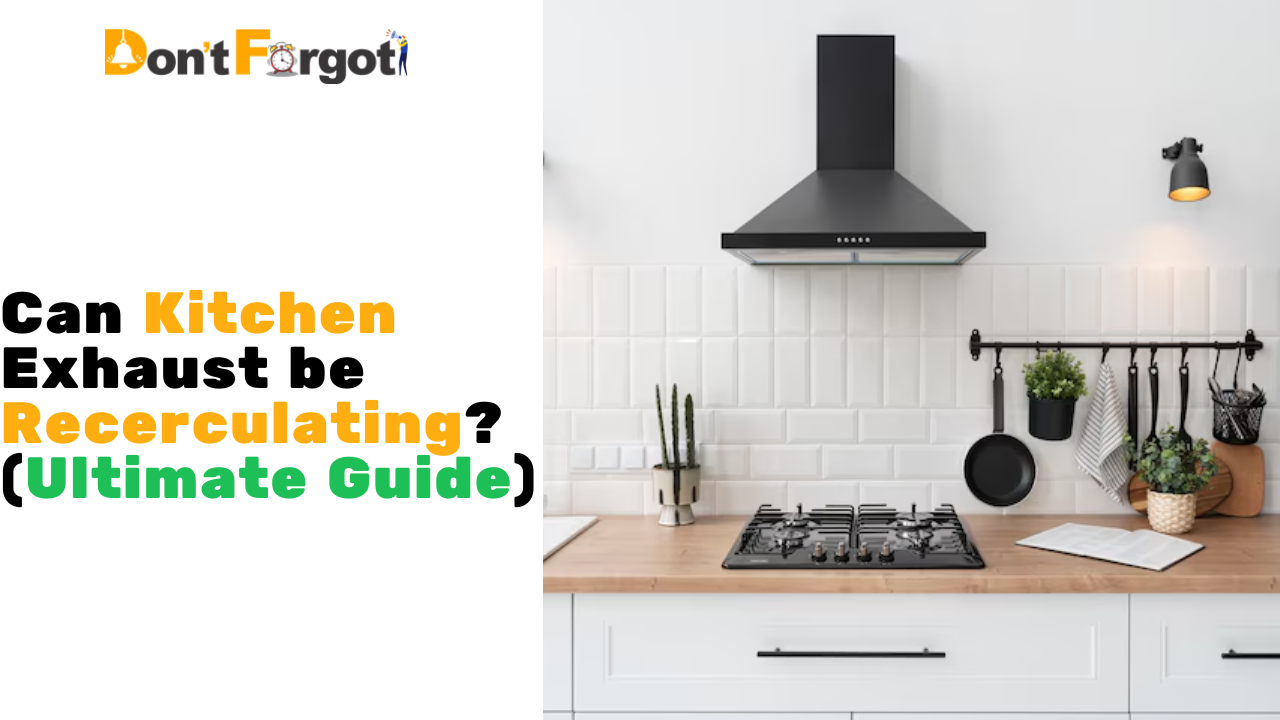When it comes to kitchen ventilation, many homeowners wonder, “Can Kitchen Exhaust be Recerculating” Recirculating kitchen exhaust systems, or ductless range hoods, offer a practical alternative to traditional ducted systems. These systems filter and clean the air before recirculating it back into the kitchen, making them ideal for spaces where exterior venting is not feasible.
Understanding how recirculating exhaust systems work, their benefits, and potential drawbacks can help you decide if this option suits your kitchen.
Key Takeaways
- Kitchen exhaust systems can be recirculated, so they don’t require outdoor ductwork.
- Recirculating range hoods filter and recirculate the air back into the kitchen, making them a cost-effective and energy-efficient option.
- Proper ventilation is essential for removing cooking odours, smoke, and grease, improving indoor air quality and reducing the risk of fire hazards.
- Recirculating exhaust systems offer a ductless solution for kitchens where traditional ducted systems are not feasible or cost-effective.
- Understanding the pros and cons of recirculating kitchen exhaust can help homeowners decide the best ventilation solution for their kitchen.
Understanding Kitchen Exhaust Systems
Keeping your kitchen exhaust system in good shape is key to a healthy home. These systems are crucial for removing smoke, grease, and odours from your kitchen. This helps make the air inside your home cleaner.
Types of Kitchen Exhaust Systems
There are two main kinds of kitchen exhaust systems: vented and ductless, recirculating ones. Vented systems use ducts to send air outside. Ductless systems filter and bring the air back into the kitchen.
- Vented Kitchen Exhaust Systems: These systems take cooking byproducts away from your kitchen by sending air outside through a duct or vent. They’re great at making indoor air cleaner and lowering fire risks.
- Ductless, Recirculating Kitchen Exhaust Systems: These systems clean and bring the air back into the kitchen. They’re good for kitchens without easy outdoor venting. But, they might not remove all contaminants as vented systems do.
Benefits of Proper Ventilation
Good kitchen ventilation has many benefits for your home:
- Improved Air Quality: A well-made kitchen exhaust system removes smoke, grease, and odours. This makes the air inside cleaner and healthier.
- Reduced Fire Hazards: Venting cooking byproducts like smoke and grease lowers the risk of kitchen fires. It keeps the cooking area safer.
- Enhanced Comfort: Proper ventilation helps control the kitchen’s temperature and humidity. This makes it more comfortable for cooking and eating.
| Feature | Vented Kitchen Exhaust | Recirculating Kitchen Exhaust |
|---|---|---|
| Air Removal | Highly Effective | Moderately Effective |
| Fire Safety | Excellent | Good |
| Energy Efficiency | Moderate | High |
| Noise Level | Moderate | Low |
Knowing about the different kitchen exhaust systems and their benefits helps you choose the best one for your home. This ensures a safer and more comfortable place for cooking.
Can Kitchen Exhaust be Recerculating?
Many homeowners wonder if kitchen exhaust systems can be recirculating or ductless. These systems are a great alternative to traditional vented ones. They have their own set of benefits and drawbacks. This can help you decide what’s best for your home.
A recirculating kitchen exhaust or a ductless range hood doesn’t need exterior ductwork. It filters and brings the air back into the kitchen instead of venting it outside. This is a good choice for kitchens where ductwork isn’t possible or wanted.
Pros of Recirculating Kitchen Exhaust
- Eliminates the need for exterior ductwork, making installation simpler and less invasive.
- Recirculates the air back into the kitchen, reducing energy loss and potential air leaks.
- Suitable for apartments, condos, or homes with limited space for ductwork.
- Offers a more discreet and aesthetically pleasing appearance compared to traditional vented range hoods.
Cons of Recirculating Kitchen Exhaust
- It may not be as effective at removing odours, smoke, and grease as a vented system.
- Regular cleaning and maintenance of the filters are required to maintain efficiency.
- It may be unsuitable for kitchens with significant cooking volume or intense heat sources.
Consider your kitchen needs when thinking about a recirculating kitchen exhaust or a ductless range hood. Look at your cooking habits, kitchen layout, and if you have windows or other natural ventilation. These can help you pick the best option.
| Feature | Recirculating Kitchen Exhaust | Vented Kitchen Exhaust |
|---|---|---|
| Ductwork Required | No | Yes |
| Grease and Odor Removal | Moderate | Highly Effective |
| Energy Efficiency | High | Moderate |
| Suitable for High-Volume Cooking | Limited | Yes |
Choosing between a recirculating kitchen exhaust and a traditional vented system depends on your needs, budget, and kitchen design. Talking to a professional can help you make a good choice for your home.
Recirculating Range Hoods
Are you looking for a modern, efficient way to clear your kitchen of smoke and odours? Consider a recirculating range hood, also known as a ductless range hood. These systems are smart for kitchens where traditional ducted hoods won’t work.

How Recirculating Range Hoods Work
Recirculating range hoods pull in air from your kitchen, clean it through filters, and then send it back. This process removes smoke, odours, and grease without an outside duct. They’re great for kitchens where ductwork isn’t possible.
Advantages of Recirculating Range Hoods
These hoods bring many benefits. They improve air quality, save energy, and offer design flexibility. By cleaning and re-circulating air, they keep your kitchen smelling fresh. Plus, you can put them in any kitchen without the hassle of ductwork.
FAQ (Can Kitchen Exhaust be Recerculating)
What is a recirculating kitchen exhaust system?
A recirculating kitchen exhaust system, a ductless range hood filter, and recirculating kitchen air. It doesn’t vent air outside. These systems use filters to remove grease, odours, and contaminants before recirculating the air.
What are the benefits of using a recirculating range hood?
Key benefits include better indoor air quality, energy savings, and design flexibility. They remove pollutants and allergens, making kitchens safer and more comfortable. Plus, they don’t need expensive ductwork, saving on installation costs and fitting easily into kitchens.
How does a recirculating range hood work?
These hoods draw in kitchen air, filter it, and then return it to the kitchen. The filters capture grease, odours, and pollutants. This creates a cycle of clean air in the kitchen.
What are the drawbacks of a recirculating kitchen exhaust system?
The main issue is that it doesn’t vent hot, humid air, and cooking smells outside. This can increase kitchen humidity and smell. Filters need regular cleaning and replacement, adding to costs. Some find these systems less effective at removing heavy smoke or steam than vented systems.
How do I choose the right recirculating range hood for my kitchen?
Consider your kitchen size, cooking habits, and desired features. Choose a model with quality filters, a strong motor, and adjustable fan speeds. Make sure it fits your kitchen’s layout and your cooking needs.
Conclusion
In conclusion, the question “can kitchen exhaust be recerculating?” reveals a viable option for many homeowners. Recirculating kitchen exhaust systems, also known as ductless range hoods, offer a practical and efficient alternative to traditional ducted systems, especially in spaces where exterior venting is not feasible. These systems effectively filter and clean the air, providing a convenient solution for maintaining indoor air quality.
While they may not be suitable for every situation, understanding their benefits and limitations can help you decide on the best ventilation solution for your kitchen. Whether you choose a ducted or recirculating system, ensuring proper ventilation is key to a healthy and comfortable cooking environment.

